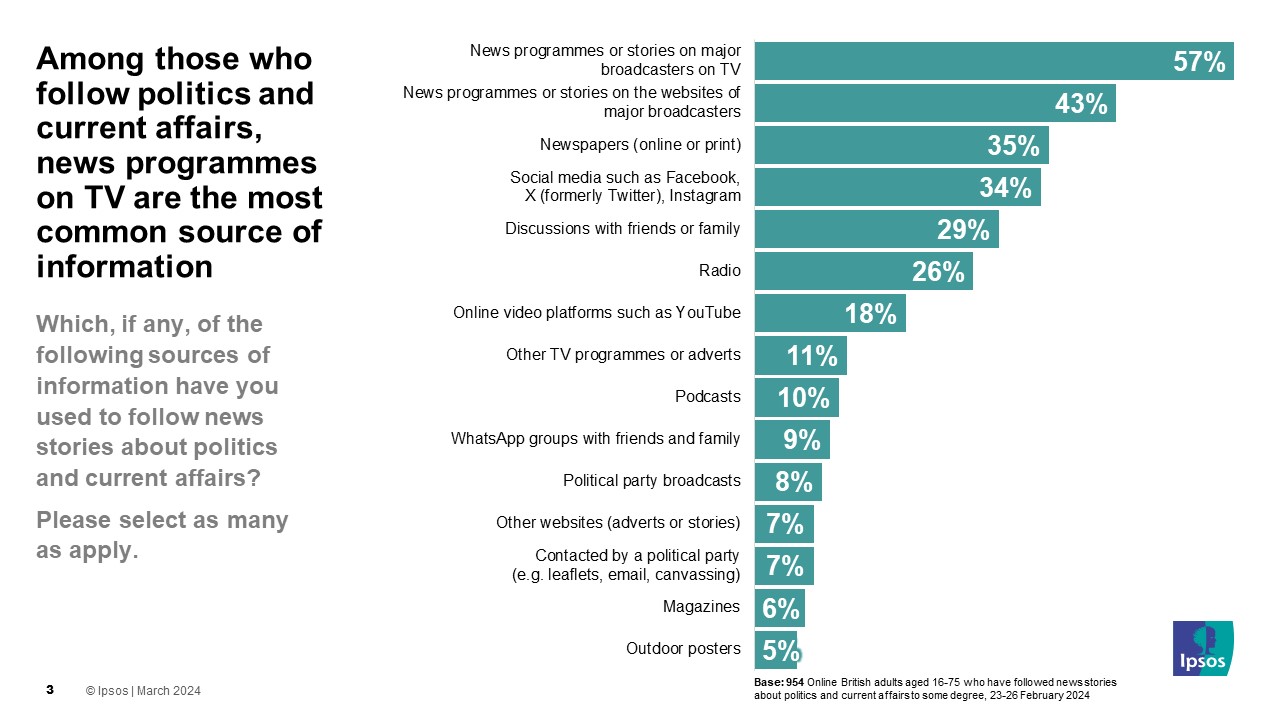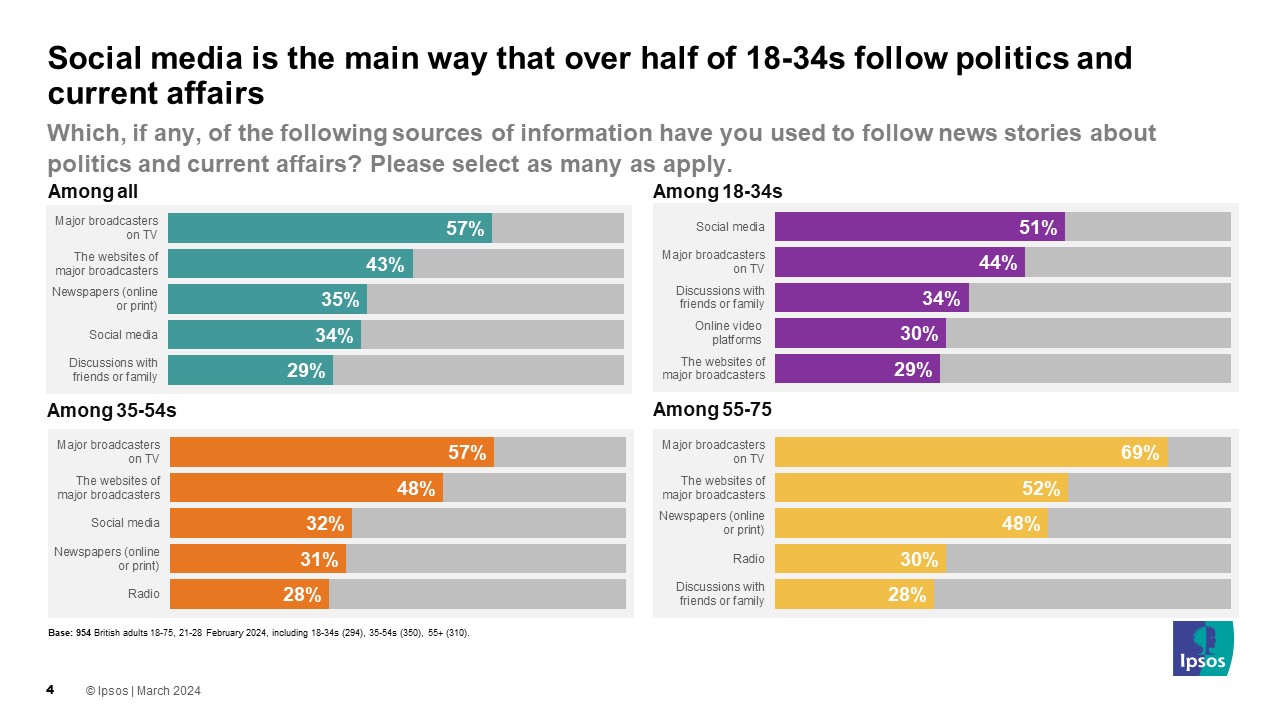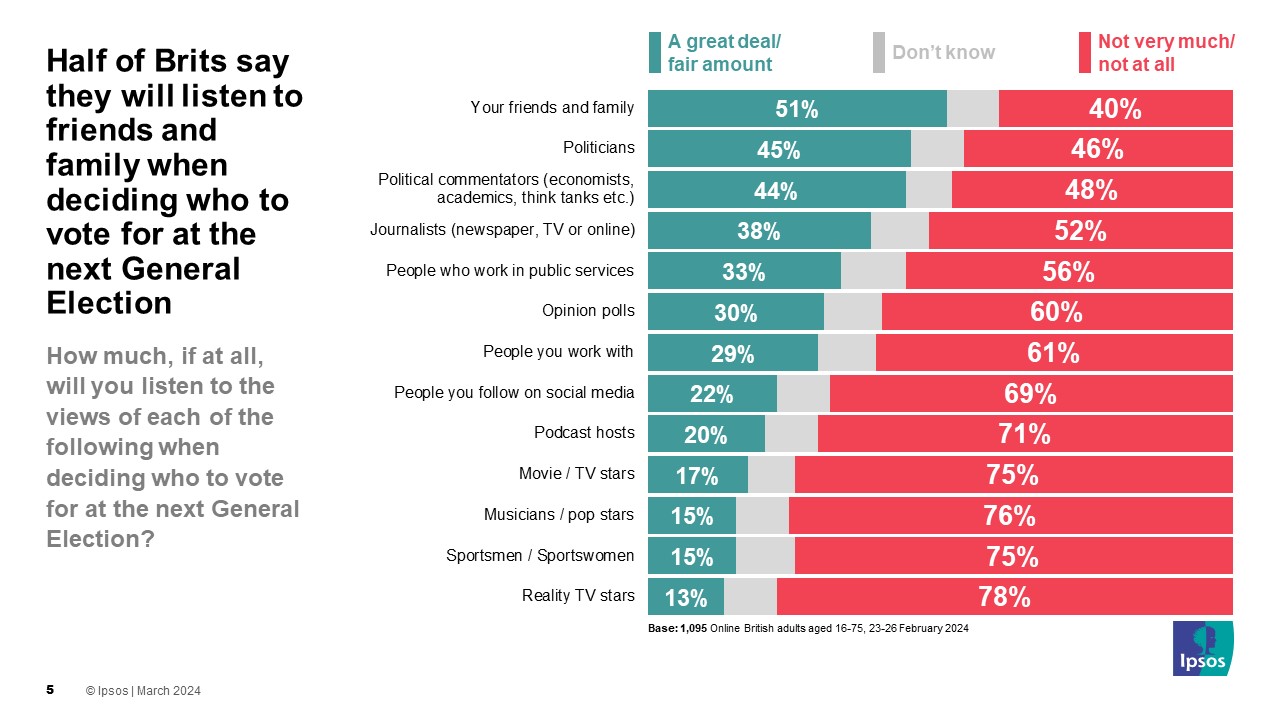Half of Brits say they will listen to their friends and family when deciding who to vote for at the next General Election
- Social media is the most popular news source among 18-34-year-olds for following politics and current affairs.
- Watching news programmes on major broadcaster on TV is the main way that the public as a whole follow politics and current affairs.
New polling from Ipsos explores how the public follow stories about politics and current affairs, and who they will listen to most when it comes to deciding how to vote at the next General Election.
Almost two thirds (65%) said that they have been following news stories about politics and current affairs closely, compared to a third (34%) who said that they have not been following them closely. Those aged 55=75 are a little more likely to be paying attention (72%) than those aged under 55 (62%).

Those who said they followed politics and current affairs to some extent, were then asked about what sources they use to follow politics and current affairs.
- The most common source of information for news on politics and current affairs is watching news programmes or stories on major broadcasters on TV (57%), followed by news programmes or stories on the websites of major broadcasters (43%).
- A third said they would use newspapers (35%) or social media platforms (34%), with slightly fewer (29%) saying they would have discussions with friends and family.
- Less than one in ten said that they have used political party broadcasts (8%) or contact from a political party, including leaflets, emails, and canvassing (7%) to follow politics and current affairs.
However there are differences in terms of what sources different age groups said they are most likely to use to follow politics and current affairs. For example, more than half of 18-34s said they followed politics and current affairs through social media (51%).

The public were also asked how much they would listen to the views of certain groups and individuals across society, when it comes to deciding who to vote for at the next General Election. Half said that they would listen to the views of their friends and family when deciding who to vote for at the next General Election (51%). This is the only group that the public said they were more likely to listen to, than not listen to, when it comes to deciding how to vote at the next General Election (40% not very much/ not at all).

The next groups that the public said they are most likely to listen to when it comes to deciding how to vote at the next General Election are politicians themselves (45%), political commentators (44%), and journalists (38%). A third said they would listen to the views of people who work in public services (33%), whilst three in ten said they would listen to opinion polls (30%) or people they work with (29%). Only a minority said that they would listen to movie/ TV stars (17%), Musicians (15%), Sportsmen/ Sportswomen (15%), and reality TV stars (13%) when it comes to deciding who to vote for at the next General Election.
Ipsos Director of Politics Keiran Pedley said of the findings:
As we approach a General Election, political parties will be carefully considering how best to reach their target voters. These findings make clear that whilst more traditional broadcast channels remain the most used sources of information for news about politics and current affairs overall, social media is the most important for those under the age of 35. Reflecting that social media will be an important channel for parties looking to reach younger voters and for the campaign more generally.
Technical note
Ipsos interviewed a representative quota sample of 1,095 adults aged 18-75 in Great Britain. Interviews took place on the online Omnibus 23-26 February 2024. Data has been weighted to the known offline population proportions. All polls are subject to a wide range of potential sources of error.






